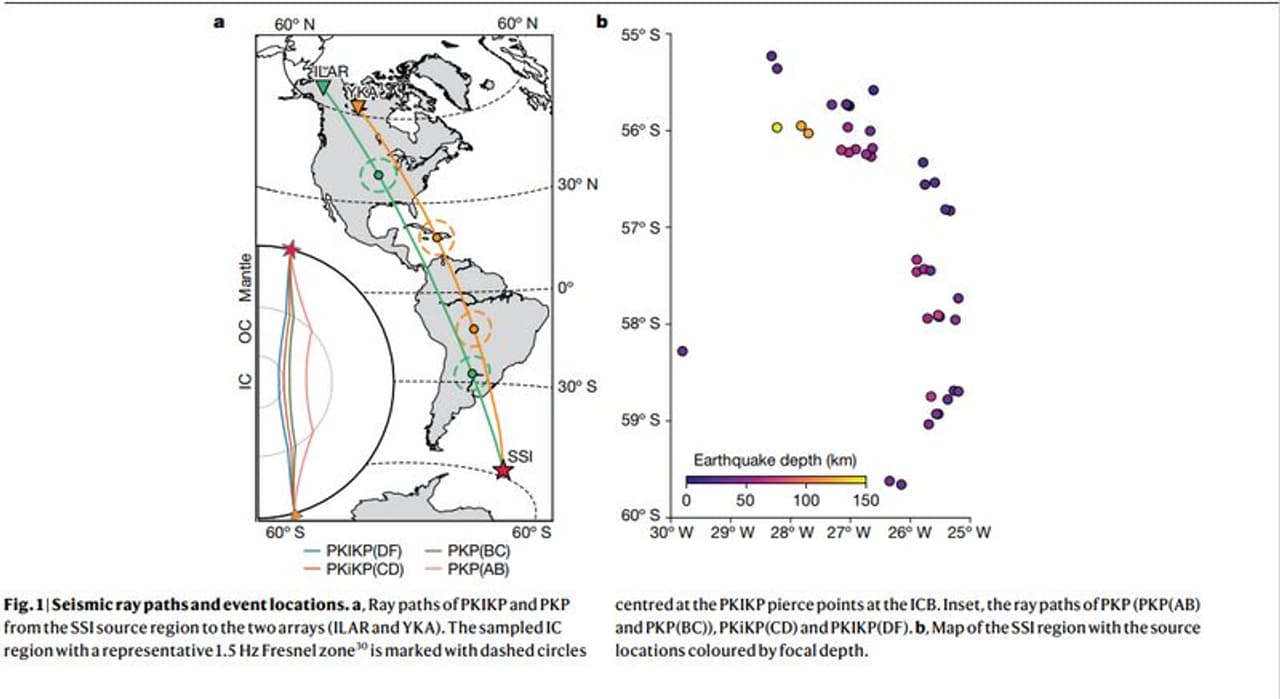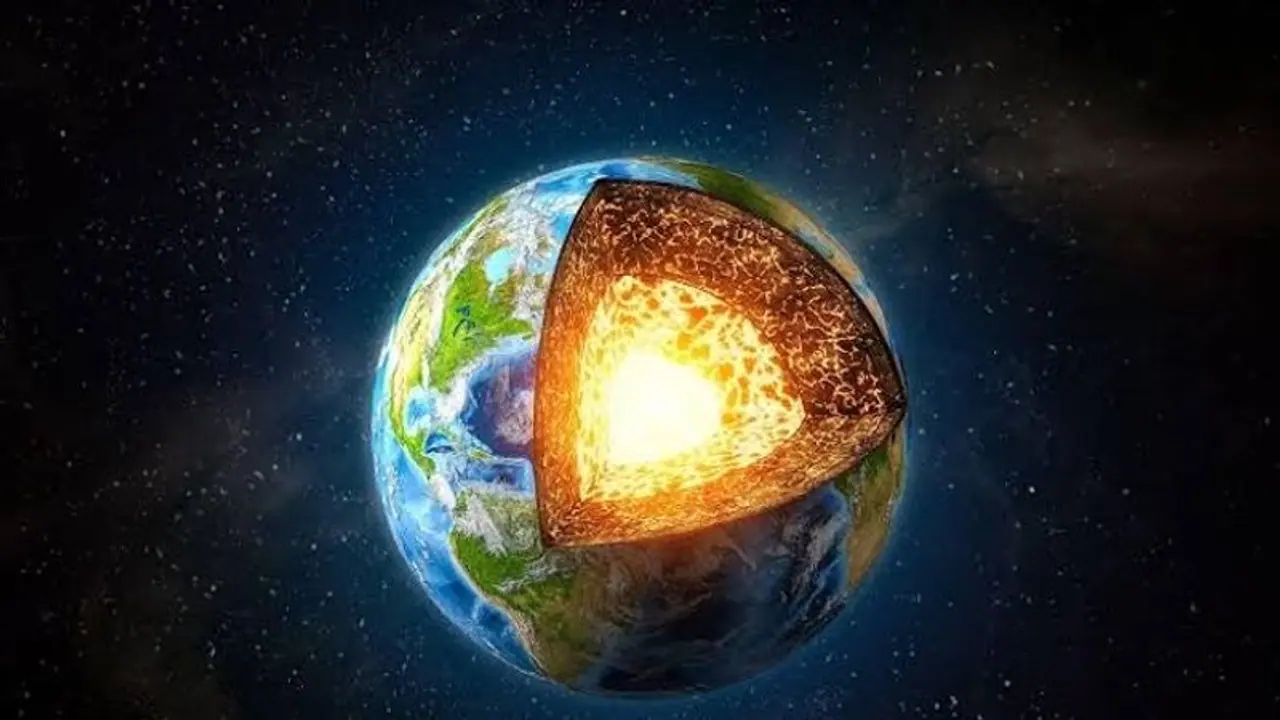Recent research has provided "unambiguous evidence" that the Earth's inner core has been gradually reducing its rotational speed compared to the planet's surface since 2010.
Recent research has provided "unambiguous evidence" that the Earth's inner core has been gradually reducing its rotational speed compared to the planet's surface since 2010. This slowdown is anticipated to marginally alter the Earth's day length by fractions of a second.

Composed primarily of iron and nickel, the Earth's inner core is a solid sphere surrounded by the liquid outer core, which consists of molten metals. This inner core is held in place by gravitational forces within the planet's layered structure, which also includes the mantle and crust.
Due to its physical inaccessibility, researchers typically study the Earth's core by analyzing seismic wave recordings generated by earthquakes, known as seismograms.
"When I first saw the seismograms that hinted at this change, I was stumped," said John Vidale, a professor of Earth Sciences at the University of Southern California, US.
"But when we found two dozen more observations signalling the same pattern, the result was inescapable. The inner core had slowed down for the first time in many decades," said Vidale, also the corresponding author of the study published in the journal Nature.

The slowing down of the Earth's inner core is a topic of intense debate within the scientific community. Some studies propose that it may rotate at a different rate than the Earth's surface, potentially even faster.
The rotation of the inner core is influenced by the magnetic field generated in the outer core and gravitational interactions within the Earth's mantle.
Recent observations suggest that the inner core's rotation is decelerating relative to the mantle, marking a reversal from its previous trend over the past four decades.
"Other scientists have recently argued for similar and different models, but our latest study provides the most convincing resolution," Vidale said.
Earlier this year, a study published in the journal Nature revealed that the melting of ice in Greenland and Antarctica, driven by climate change, is affecting Earth's rotation by slowing it down. Duncan Agnew, a geophysicist at the University of California San Diego and the study's author, demonstrated that the Earth's liquid core is decelerating in its rotation. As a counterbalance, the solid Earth is spinning faster, according to Agnew's findings.
This adjustment has led to a decrease in the frequency of 'leap seconds' needed to be added to Coordinated Universal Time (UTC) in recent decades. Since 1972, a 'leap second' has been periodically added to UTC to account for variations in the Earth's rotation speed.
For their study, researchers examined seismic data collected from 121 repeating earthquakes occurring between 1991 and 2023 in the South Sandwich Islands, a remote archipelago in the South Atlantic Ocean known for intense seismic activity.
The analysis also incorporated data from twin Soviet nuclear tests conducted between 1971 and 1974, along with data from multiple French and American nuclear tests, which have been integral to studying the properties and behavior of the Earth's inner core in various scientific investigations.
